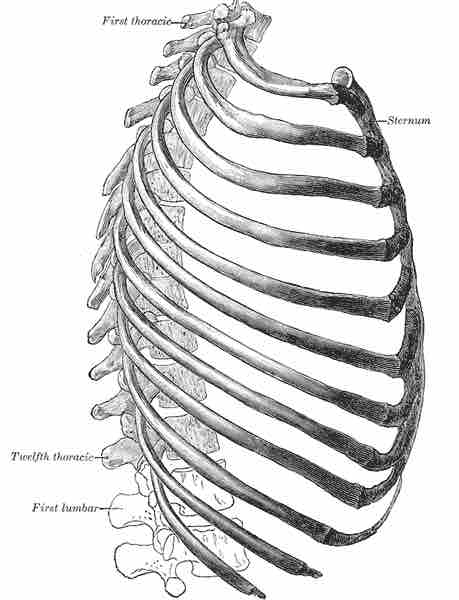Ribs are long, curved bones that form the rib cage surrounding the thorax. The thoracic cage can expand and contract to facilitate breathing in association with the diaphragm; it also protects the lungs, heart, and other organs of the thoracic cavity.

Ribs
Lateral view of rib cage showing its connections to vertebrae. The first thoracic vertebra has a rib attached to it that curves across to the sternum.
Structure of a Rib
A rib consists of a head, neck, and shaft. The head of the rib is the most posterior region of the rib and articulates with the vertebral column. The flattened neck region provides an attachment point for numerous muscles located within the back. Finally, the shaft forms the majority of the length of the rib as it curves around the thoracic cavity forming the rib cage.
Organization of the Ribs
Humans have 24 ribs split into pairs that are named numerically passing inferiorly from the neck. The first five ribs are termed true ribs because they attach directly to the sternum through the costal cartilage.
The next five ribs are termed false ribs because they attach to the sternum indirectly through the costal cartilage.
Finally, the last two ribs are termed floating ribs because they do not attach to the sternum at all.
Rib 1 is the shortest and most curved of the ribs. Descending from rib 1, the ribs increase in size up until rib 7 before decreasing in length again.